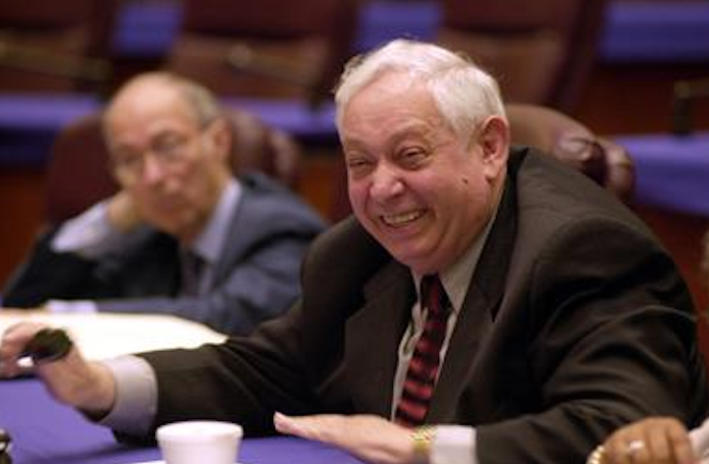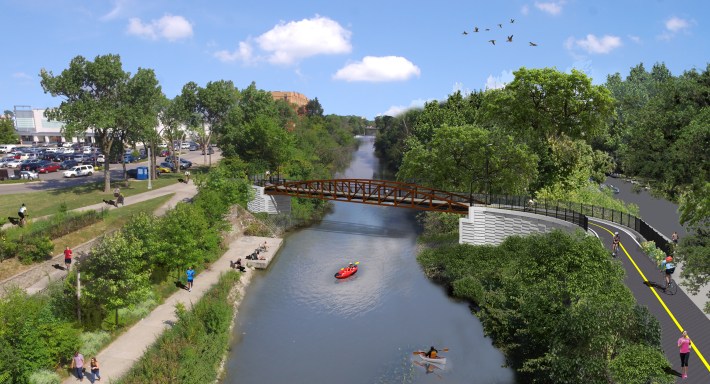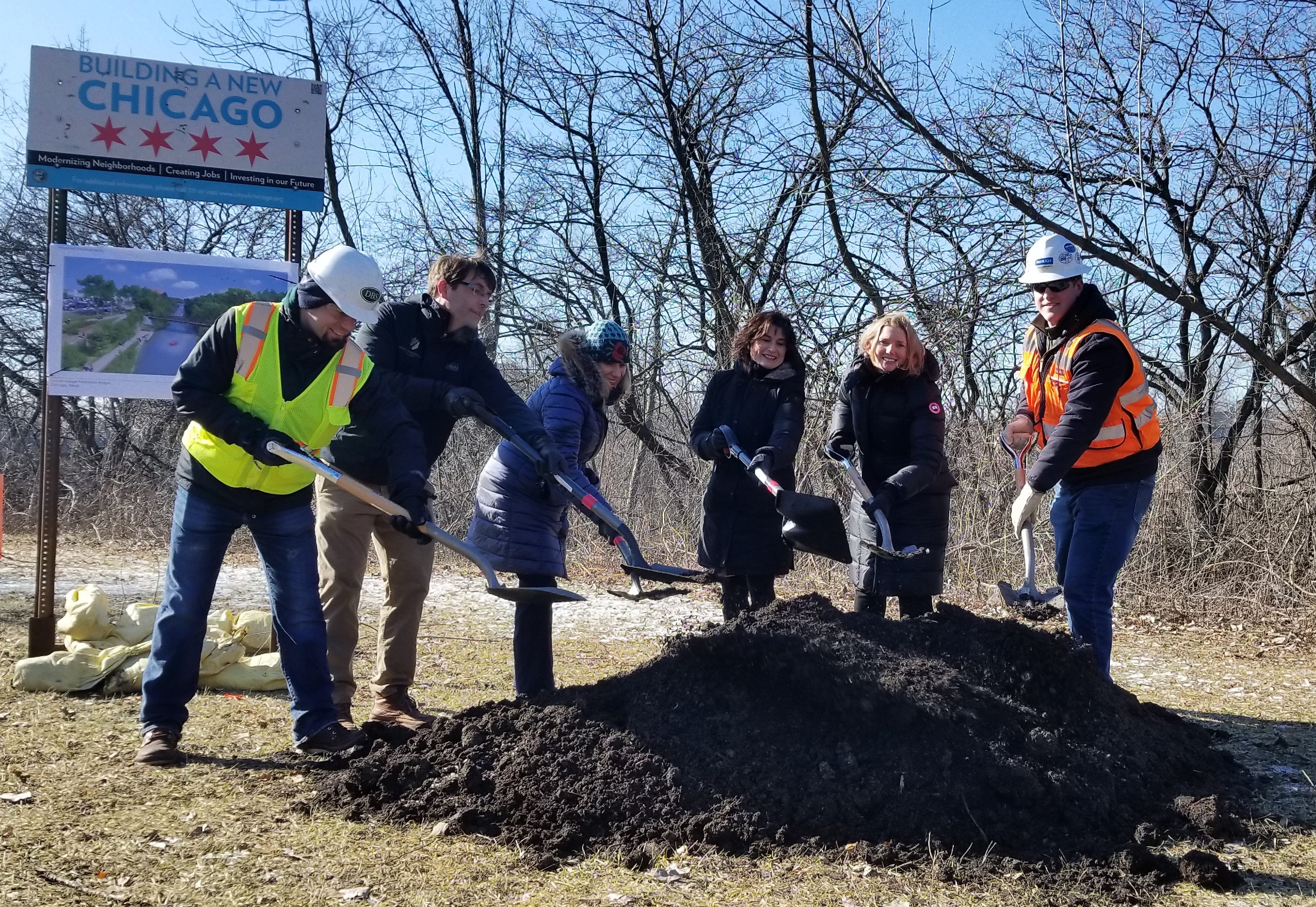Last month after the feds charged southwest side alderman Ed Burke with attempted extortion for allegedly trying to shake down a Burger King franchisee, that left only one surviving, non-indicted member of the notorious Vrdolyak 29 in City Council, north side alderman Patrick O'Connor. Longtime Chicagoans will recall that in the 1980s the nearly all-white aldermanic bloc tried to thwart Mayor Harold Washington's every move during the racially charged Council Wars.
One of the most colorful members of that melanin-challenged faction was 50th Ward alderman Berny Stone, who ruled the far-north West Ridge neighborhood from 1973 until 2011, when current alderman Debra Silverstein defeated him in a rancorous runoff election. During his tenure, Stone reportedly relished the many shouting matches he got into at City Hall, and he once erected a nearly three-foot guardrail, nicknamed "Berny's Wall," in the center of Howard Street between Kedzie and California to block drivers from crossing between the suburbs and the city.
This morning when Silverstein and other city officials broke ground on a new bike and pedestrian bridge in the ward, they were metaphorically shoveling dirt onto a particularly perplexing aspect of Stone's legacy: his inexplicable effort to kill the project some 14 years ago.
Officially called the Lincoln Village Pedestrian Bicycle Bridge, the $3.4 million, 16-foot-wide, 180-foot-long span will provide the final missing link in the North Shore Channel Trail, which runs nearly seven miles from Albany Park to Evanston. Most of the path's Chicago portion hugs the east bank of channel, but north of Lincoln Avenue the trail shifts to the west bank. As it stands, people strolling, running, and biking are forced to make the crossing via Lincoln or Devon, busy four-lane highways.

By 2005, the Chicago Department of Transportation had designed a bridge near this location and secured funding for it. But Stone, who'd originally endorsed the project, pulled his support, forcing the department to put the initiative on ice. (I was working as CDOT's bike rack czar at the time but wasn't involved in bikeways planning discussions.)
In October 2017, the city announced that the project was finally moving forward. At the time, CDOT deputy commissioner Luann Hamilton, who worked on the bridge back in the day, told me Stone claimed his opposition was based on feedback from neighbors east of Kedzie, which parallels the east bank. He said residents were worried about people parking on their streets and using the bridge to access the Lincoln Village Shopping Center, west of the channel. But Hamilton says the alderman provided no documentation to support this claim.
Not long after Stone put the kibosh on the project, the Lincoln Village Senior Apartments were constructed just west of the trail, near the proposed span site. "An alternative theory was that the developers . . . were concerned that the bridge would impact or detract from their site," Hamilton told me.
Stone gave a third explanation for vetoing the bridge at a 2005 meeting with bike advocates, claiming he was concerned that cyclists coming off the bridge might be struck by drivers in the shopping center's parking lot, according to attendee Bob Kastigar. But that didn't make any sense because the bike path was a significant distance from the lot.
But former Active Transportation Alliance executive director Rob Sadowsky, now living in Portland, Oregon, told me in 2017 that there was a racial element to the bridge opposition. Sadowsky said that at a community meeting he attended in 2001, Stone referred to African-American and Latino youths as "little blacks and browns." The alderman implied, according to Sadowsky, that the ward should avoid measures that would bring more young people of color to the neighborhood.
When I brought up Sadowsky's claim, Stone's children vehemently denied it. "That infuriates me," responded daughter Ilana Stone Feketitsch. "Never did he ever dismiss anyone of any race, color, and creed. He was a great man who lived his life for his community, including people of every race and religion."
By the time Stone was ousted in 2011 and Silverstein gave CDOT the OK to build the bridge, the funding had been used for other projects and a canoe launch had been built at the planned bridge site, forcing the department to go back to the drawing board.

Six years later, when the city announced it was moving forward with construction of the weathered-steel structure, just north of the canoe launch, work was slated to begin in early 2018 and wrap up in early 2019. But the groundbreaking was delayed yet another year because of red tape, according to CDOT spokesman Mike Claffey. "It was due to time needed to line up all of the required permits," he said. "Working on the waterway is... complicated in terms of permits." The bridge is currently expected to be in place this fall.
CDOT Commissioner Rebekah Scheinfeld joined Silverstein this morning to shovel the black soil under sapphire skies. "Residents... will finally have a beautiful and fully connected bike path," the alderman said in a statement.
But is Berny Stone rolling in his grave now that the bridge he tried to block is getting built? Bike advocate Bob Kastigar says there's no way to know for sure what the politico would think of the situation. "I don't think anyone knows what his motivations were, so it's one of life's great mysteries," he said. "It took a long time, but the important thing is that we're finally getting our bridge."




